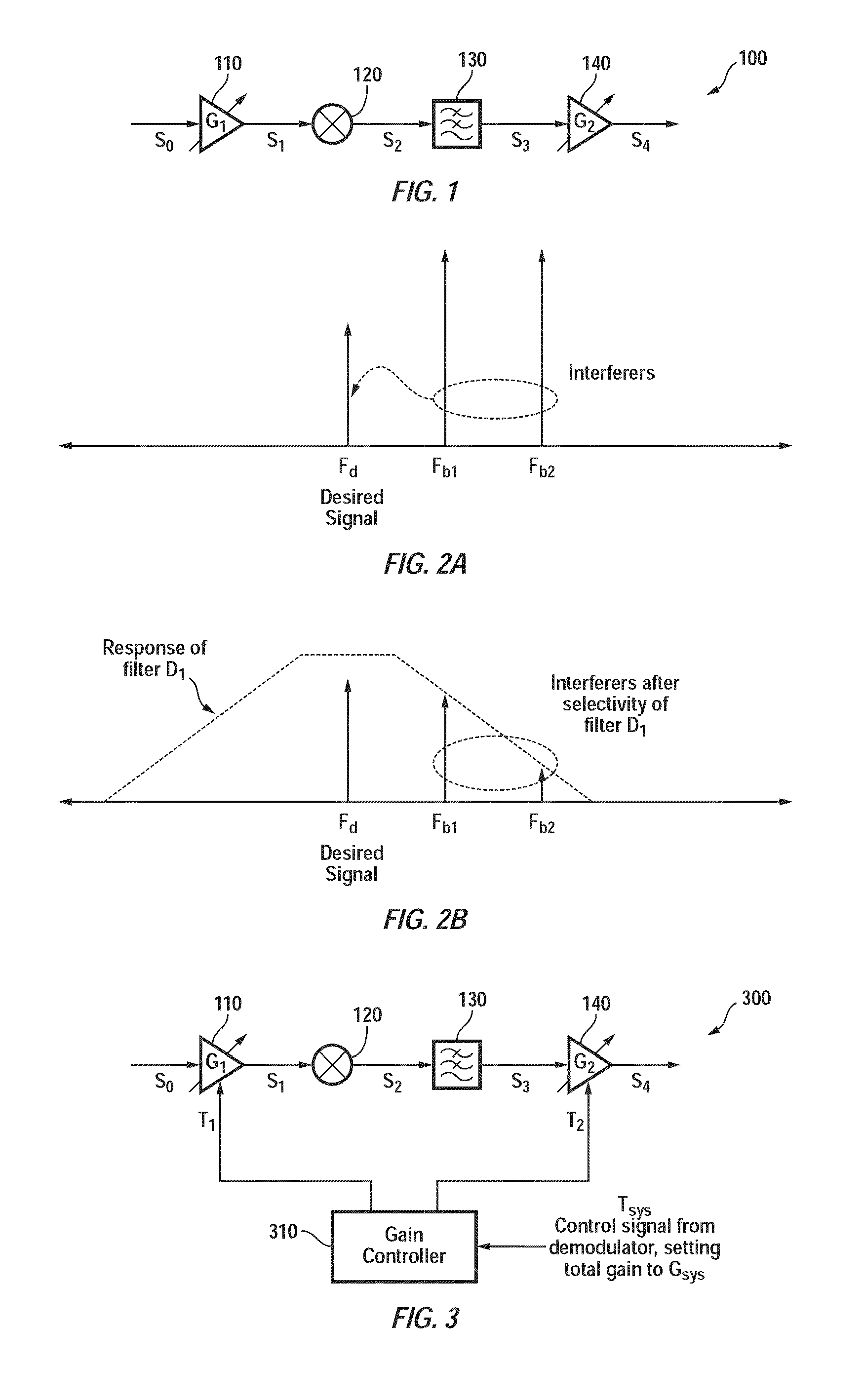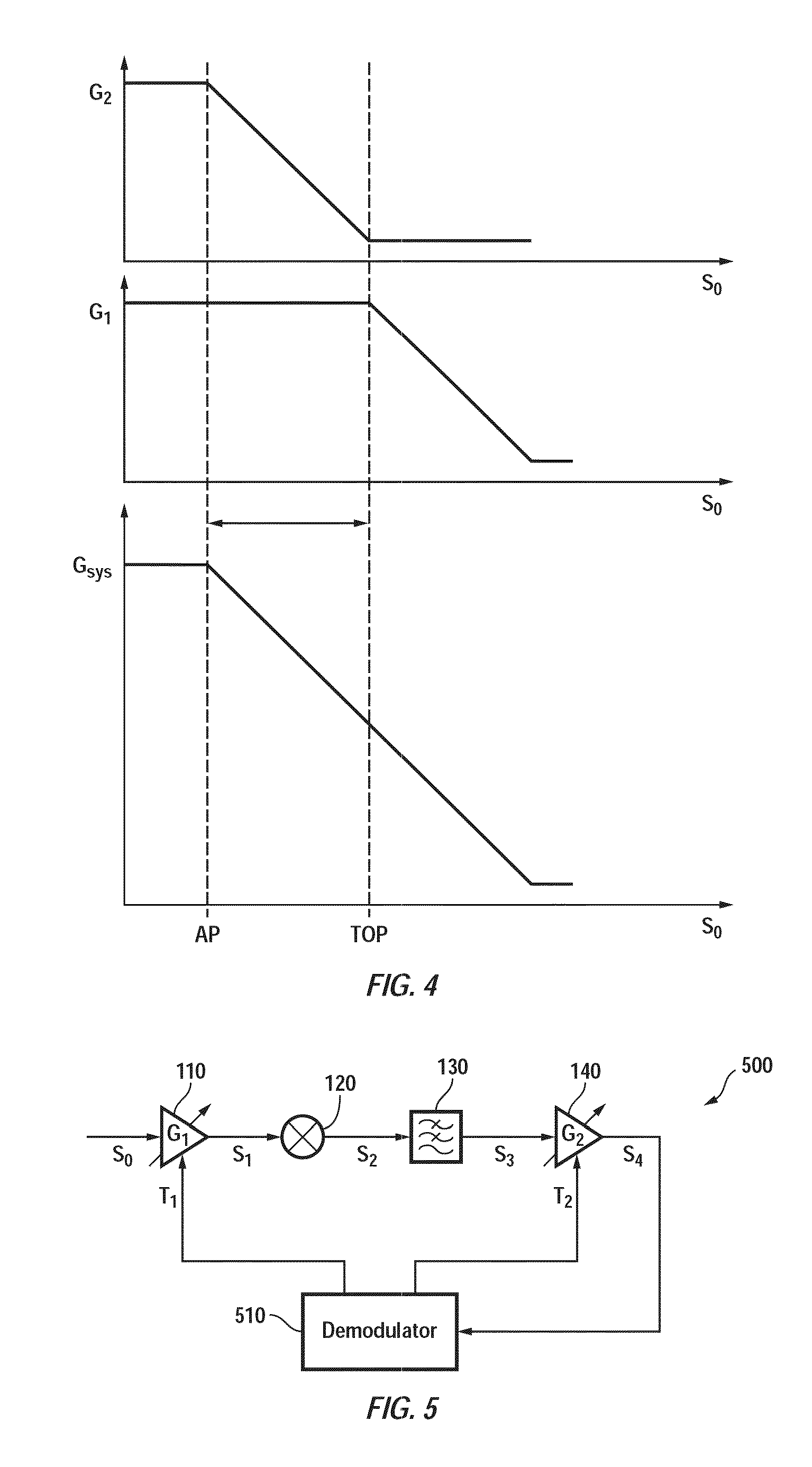Gain partitioning in a receiver
a receiver and gain technology, applied in the field of gain partitioning in the receiver, can solve the problems of degrading the signal-to-noise ratio, increasing the distortion products in the signal, and degrading the linearity performance of the system, so as to optimize the signal level entering
- Summary
- Abstract
- Description
- Claims
- Application Information
AI Technical Summary
Benefits of technology
Problems solved by technology
Method used
Image
Examples
Embodiment Construction
[0028]FIG. 6 is a block diagram of a receiver 600, in accordance with one embodiment of the present invention. Receiver 600 is shown as including, in part, amplifiers 110, 140, frequency converter 120, filter 130 and sensor 610. A local oscillator (not shown) provides an oscillating signal to frequency converter 120. Frequency converter 120 may be a mixer, a multiplier, etc. Demodulator 510 may be external or internal to receiver 600. Sensor 610 sense signal S1 to determine the strength of the RF signal. Signal S1 so sensed is supplied to demodulator / controller 510. Also supplied to demodulator / controller 510 is signal S4 that is generated by amplifier 140. In response, demodulator / controller 510 generates signals T1 and T2 that are respectively applied to amplifiers 110 and 140 to control their gains. As see from FIG. 6, receiver 600 together with demodulator / controller 510 form a pair of control loops L1 and L2, which are independently controlled by the demodulator / controller 510....
PUM
 Login to View More
Login to View More Abstract
Description
Claims
Application Information
 Login to View More
Login to View More - R&D
- Intellectual Property
- Life Sciences
- Materials
- Tech Scout
- Unparalleled Data Quality
- Higher Quality Content
- 60% Fewer Hallucinations
Browse by: Latest US Patents, China's latest patents, Technical Efficacy Thesaurus, Application Domain, Technology Topic, Popular Technical Reports.
© 2025 PatSnap. All rights reserved.Legal|Privacy policy|Modern Slavery Act Transparency Statement|Sitemap|About US| Contact US: help@patsnap.com



